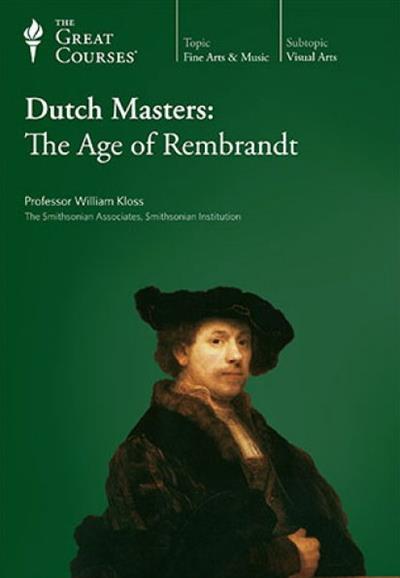ttc-Age.Of.Rembrandt - sup3rseeders: 4
leechers: 4
ttc-Age.Of.Rembrandt - sup3r (Size: 246.39 MB)
Description Holland in the 17th century was home to the most remarkable concentration of artistic talent and accomplishment in modern history. From this tiny land came the great masters Vermeer, Frans Hals, Jan Steen, Pieter de Hooch, and Rembrandt, as well as an abundant assembly of memorable artists. To this day, these compelling pictures take our breath away-an unrivalled heritage of portraits, still lifes, landscapes, marine paintings, and profoundly observant images of everyday Dutch life that continue to grace museums throughout Europe and America. Why are our eyes mesmerized by the glistening stream issuing from the pitcher in Vermeer's The Milkmaid? How does our understanding deepen with each moment we spend taking in the revealing details of his Woman Holding a Balance? What are the means that create the self-contained intimacy that glows from de Hooch's A Mother's Duty, or from his Interior with Women Beside a Linen Chest? We are forever astonished by the inclusive sweep of Rembrandt's art, which encompasses the brooding power of The Mill and the moving immediacy of The Jewish Bride. That unsurpassed image of human devotion was painted with such astonishing bravura that Vincent Van Gogh, sitting spellbound before the painting in Amsterdam's Rijksmuseum two centuries later, was impelled to say: "One must have died several times to paint like that." Learn What Made the Art of Holland so Special What was it that made Holland so special, that nourished great masters and produced artists like Jan van de Cappelle, Meindert Hobbema, Jacob van Ruisdael, Pieter Saenredam, Gerard ter Borch, Hendrick Terbrugghen, and so many others? And what of the extraordinary technical ability of Holland's artists? They commanded a realistic technique so descriptive and alive that their work seemed like a transcription of life itself. Many people today think of the Dutch artists as "realists." But is this really true? Were they, instead, the creators of a parallel reality-often preoccupied with concerns of faith and morality, and expressing deeper truths through the familiar realities they were painting? Dutch Masters: The Age of Rembrandt will introduce you to the art of 17th-century Holland. It traces the development of this renowned, independent school of painting, and the great seafaring nation that produced the new society that would be reflected in that new art. The course concludes with the achievements of Holland's greatest and most versatile genius, Rembrandt, whose range of work-including his remarkable etchings-claims the final seven lectures. Your introduction to this marvelous world is a visually sumptuous one, as Professor William Kloss-well known to Teaching Company customers from his A History of European Art and Great Artists of the Italian Renaissance-shows you the work of more than 100 artists and guides you through more than 450 masterful paintings. How Deep Meaning Can Hide in the Tiniest Detail Painting by painting, you'll see how each artist's technical choices-about composition, lighting, color, or brushstrokes, to name a few-contribute to a work's overall impact and statement. And you'll see how even the smallest detail of content can speak volumes. For instance, the artist may depict a room and include a painting hanging on a wall within that room, and that painting within the painting may have significant meaning. The same may be true of an artist's choice of background props or secondary figures in the painting. Dutch artists created paintings that offered insights into history and commerce. They created great religious works that not only interpret biblical narratives but address the spiritual conflicts of the period. And they also placed on canvas every facet of daily domestic and social life in "genre" paintings, one of the most characteristic categories of Dutch art. Whether you're new to art or an experienced museumgoer, Dutch Masters: The Age of Rembrandt is a delight, filled with insights into the explosive inventiveness of Dutch art as it interpreted and reinvented the reality of Holland-the most dynamic nation in 17th-century Europe. Related Torrents
Sharing Widget |